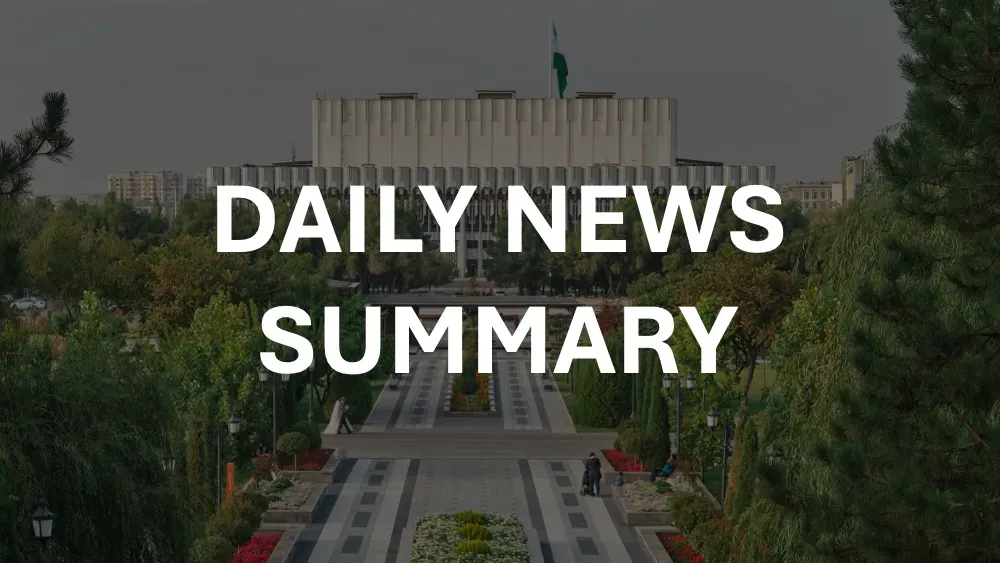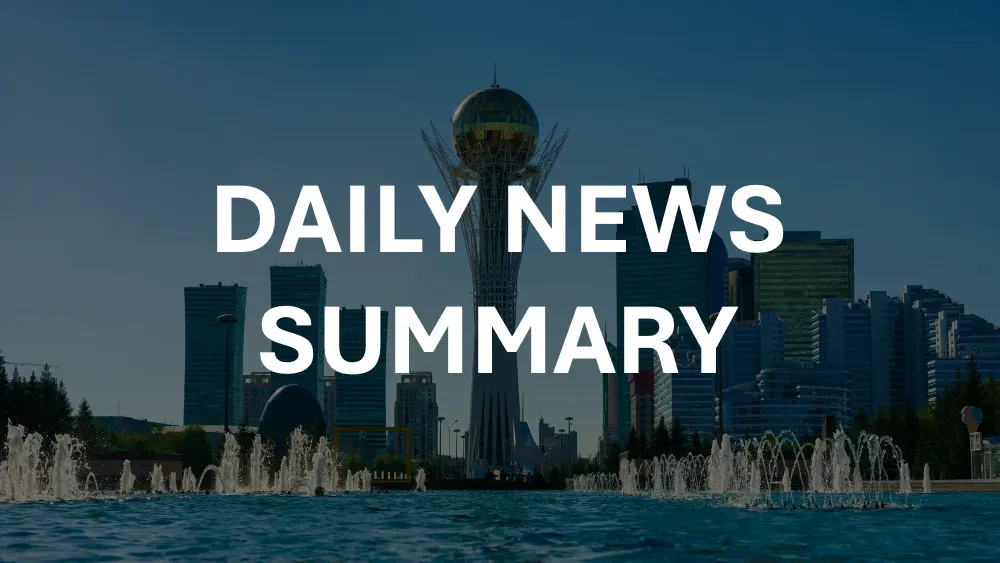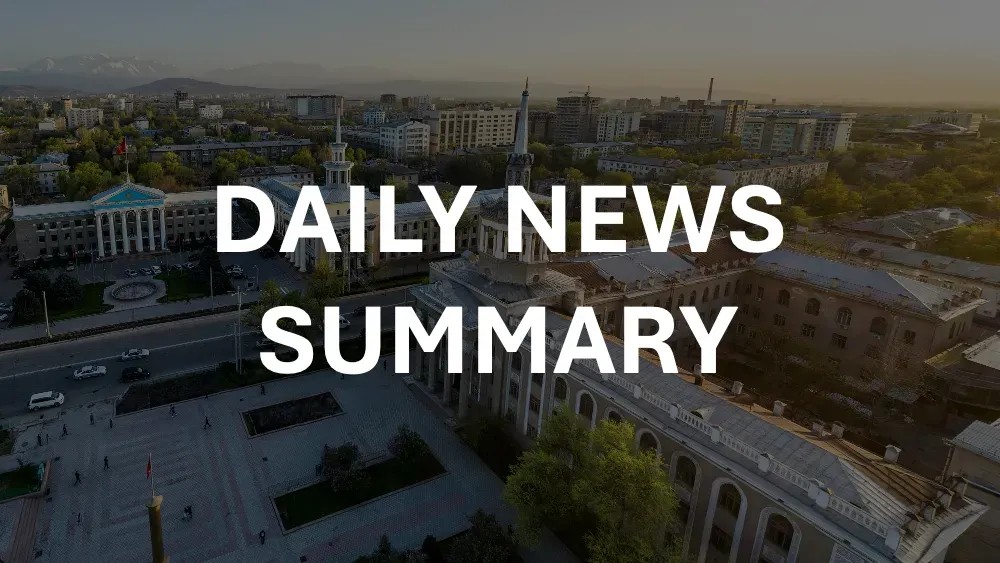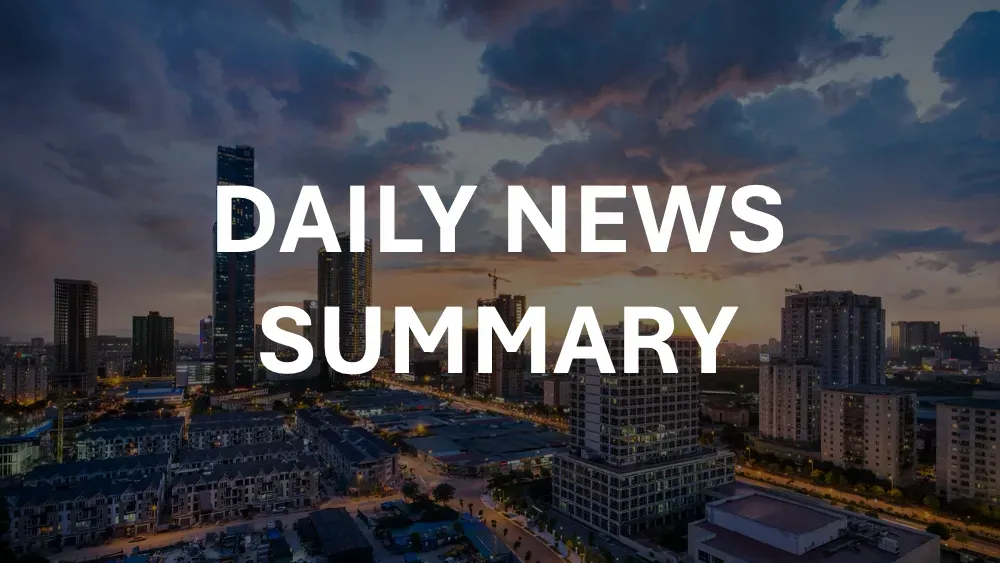📍 Get daily intelligence from Uzbekistan and Central Asia. Lexica News delivers local news that shapes global decisions—synthesized from local sources international media misses.
Uzbekistan's energy sector presents one of Central Asia's most paradoxical transformations: while natural gas production declined 4.2% in early 2025 and the country became a net importer in 2023, the government simultaneously launched $9 billion in gas processing projects alongside attracting €22 billion in renewable energy investment. This dual strategy reflects both resource constraints and ambitious diversification goals, creating distinct opportunities and risks for energy sector investors navigating President Mirziyoyev's transformation agenda through 2030.
The energy pivot addresses immediate realities: with approved hydrocarbon reserves forecast to last only 20-30 years and domestic gas demand projected to rise 30% to 65 billion cubic meters by 2030, Uzbekistan faces structural supply constraints. Yet renewable energy capacity exceeded 2.5 GW by end-2024, with 11 operational solar plants generating substantial international investor interest. For international professionals, understanding both trajectories provides essential context for investment decisions and operational planning in Uzbekistan's evolving energy landscape.
Current Landscape: Gas Processing Expansion Amid Production Decline
Uzbekistan's natural gas sector operates under fundamental contradictions that define current market realities. The country ranks 11th globally for mining and 14th for reserves, yet production fell from 61.59 billion cubic meters in 2018 to 44.59 billion cubic meters in 2024. Despite declining output, gas exports increased 18.4% in 2024 to $627.6 million, highlighting the tension between export revenue needs and domestic supply constraints.
The government's response centers on value-added processing rather than increased extraction. Officials announced 52 projects worth $9 billion scheduled for completion by 2025, designed to halt raw gas exports and focus on petrochemical production. This strategy aims to increase processing capacity from 56.3 billion cubic meters in 2021 to 65 billion cubic meters by 2025, transforming the sector's value proposition.
The Bukhara Gas Processing Plant, Central Asia's largest, exemplifies this transition. After modernization, the facility increased production capacity by 35% since 2020, now processing 8.1 billion cubic meters annually with expansion plans to 10.5 billion cubic meters by 2025. The plant's polyethylene output grew from 26,000 to 117,000 tons, demonstrating successful value-addition despite overall sector production challenges.
Current pricing structures complicate this transformation. Uzbekistan maintains some of the world's lowest prices for wholesale gas, with implied subsidies amounting to $3.8 billion or 6.6% of GDP in 2020. These subsidies support domestic consumption but undermine upstream investment appeal for foreign investors, creating market distortions that affect processing project economics.
Documented Experiences: Processing Projects and Infrastructure Development
Major processing initiatives reveal mixed implementation experiences across different scales and partnerships. The Bukhara complex increased production capacity from 35,000 to 125,000 metric tons after modernization, with actual output rising from 26,000 to 117,000 metric tons. This success story demonstrates achievable capacity expansion within existing infrastructure frameworks.
Larger-scale projects face more complex development timelines. The planned $3.8 billion synthetic fuel production project in Bukhara region, designed to produce 280,000 tons annually and create 1,200 jobs, represents the government's ambitious processing targets. However, implementation timelines remain uncertain given the scale of investment required and current production constraints.
International partnerships show varying progress rates. The government engaged with Petronas for projects in deep processing and green energy, while 39 major projects worth $2.6 billion launched in 2024. These partnerships indicate strong international interest but also highlight the need for foreign expertise and capital to realize processing ambitions.
The Ferghana Oil Refinery, with 111,200 barrels per day capacity, demonstrates operational challenges in securing raw materials. The facility processes approximately 60% domestic crude and 40% imported oil from Kazakhstan and Russia, illustrating supply chain dependencies that affect processing sector viability. Similar challenges affect gas processing projects that depend on consistent feedstock availability.
Regional infrastructure development supports processing expansion. Seven major oil and gas projects involve companies including Lukoil, Gazprom, and SOCAR, indicating substantial international engagement despite production concerns. Future plans include establishing "basic chemistry" capabilities for aromatic hydrocarbon production, suggesting comprehensive sector transformation beyond current processing limitations.
Stakeholder Realities: Renewable Investment vs. Gas Infrastructure
Government data projects 54% renewable energy by 2030, while businesses report experiencing infrastructure gaps and financing challenges that complicate actual implementation timelines. The gap between official targets and operational realities creates distinct stakeholder experiences across the energy transformation.
International renewable energy investors demonstrate strong confidence levels despite implementation uncertainties. €22 billion in renewable energy investment attracted by end-2024 represents substantial international capital commitment, with World Bank and IFC supporting 1,000 MW solar and 500 MW wind capacity through various financial instruments. This investment level suggests investor confidence in policy frameworks and implementation capabilities.
Operating renewable energy projects document successful commissioning experiences. Two 440 MW solar plants in Samarkand and Jizzakh regions became operational in 2024, while the 100 MW Khorezm plant scheduled for November 2025 will produce over 240 GWh annually. These projects demonstrate successful development timelines and operational capacity achievement within international partnership frameworks.
Gas processing stakeholders experience different operational environments. Industrial users report gas shortage concerns during peak demand periods, with pervasive shortages in heating and electricity services due to significant underinvestment. These supply constraints affect processing facility planning and capacity utilization, creating operational uncertainty for petrochemical projects dependent on consistent gas feedstock availability.
Local energy companies navigate dual transformation requirements. Uzbekneftegaz operates two domestic refineries while managing declining production output, forcing adaptation to both renewable energy mandates and processing capacity expansion goals. This dual focus creates resource allocation challenges as companies balance traditional operations with transformation investments.
International development organizations provide mixed assessments. The IEA notes that while gas processing expansion addresses value-addition goals, production decline trends raise questions about long-term feedstock availability. Similarly, World Bank support for renewable projects indicates confidence in implementation capabilities while acknowledging grid integration challenges requiring substantial infrastructure investment.
Understand Uzbekistan Like an Insider
This analysis draws from extensive research, but the story continues to evolve daily. Lexica synthesizes breaking developments from dozens of Uzbek news sources—from mining policy changes to local protests that never make international headlines.
Our daily intelligence briefs help executives, diplomats, and researchers track:
- Regulatory shifts affecting foreign investment
- Local opposition to development projects before they escalate
- Market dynamics that signal opportunity or risk
- Political developments that reshape the business landscape
Operational Context: Investment Requirements and Implementation Timelines
Gas processing project economics operate within heavily subsidized pricing environments that distort traditional cost-benefit calculations. With natural gas pricing below costs and full price deregulation planned only for 2026, processing projects must account for eventual price adjustments that could fundamentally alter operational economics.
Current investment programming reflects government prioritization levels. Uzbekistan's 2024 Investment Program contains 309 projects worth $18 billion, with most directed toward energy and oil and gas industries. This allocation demonstrates resource commitment to energy transformation but also highlights the scale of capital requirements for simultaneous processing expansion and renewable development.
Renewable energy projects demonstrate clearer operational timelines and cost structures. The 191.6 MW Gijduvan Solar Plant requires $120 million investment for mid-2025 completion, providing 407 million kWh annually. Similarly, the 250 MW Bukhara solar plant with 63 MW battery storage represents Central Asia's first integrated battery storage system, indicating technological advancement within renewable development.
Gas processing facilities face more complex cost structures. The synthetic fuel project's $3.8 billion investment for 280,000 tons annual capacity suggests $13,571 per ton of capacity, significantly higher than regional petrochemical projects. These cost levels reflect both technological requirements and infrastructure development needs in processing sector expansion.
Regulatory compliance costs remain uncertain pending energy sector reforms. The iCRAFT program's $46.25 million grant supports energy subsidy reforms designed to create emission reduction incentives. These reforms could affect both processing project economics and renewable energy competitiveness as pricing structures adjust toward market-based mechanisms.
Financing structures vary significantly between sectors. Renewable projects benefit from World Bank payment guarantees and established international financing mechanisms, while gas processing projects depend more heavily on bilateral partnerships and national budget allocations. This financing gap affects development timelines and risk profiles across the dual transformation strategy.
Regional Comparison: Central Asia's Energy Transformation Leadership
Uzbekistan's dual energy strategy positions the country uniquely within Central Asian energy transformation compared to regional peers pursuing more singular approaches. Turkmenistan exported 37.3 billion cubic meters in 2016 with 13.6 trillion cubic meter reserves, maintaining gas export focus without significant processing or renewable development. This contrast highlights Uzbekistan's more complex but potentially more resilient transformation approach.
Kazakhstan's energy profile differs substantially in both resources and strategy. With 2.3 trillion cubic meter gas reserves, Kazakhstan re-injects most gas for oil recovery rather than export or processing, while failing to meet 10 billion cubic meter annual pipeline commitments to China with only 4.6 billion cubic meters delivered in 2022. This performance contrast suggests Uzbekistan's processing focus may provide more reliable value-addition pathways than traditional export strategies.
Renewable energy development shows Uzbekistan leading regional transformation pace. While Kazakhstan and Kyrgyzstan pursue hydropower and wind projects, Uzbekistan's 2.5 GW renewable capacity by end-2024 represents the region's most aggressive solar deployment. Kyrgyzstan relies on hydropower for 76-88% of electricity generation but lacks significant gas resources, making direct comparison difficult.
Regional infrastructure connectivity affects transformation success rates. The Turkmenistan-Uzbekistan-Kazakhstan-China pipeline capacity of 55 billion cubic meters annually provides export alternatives, though both Kazakhstan and Uzbekistan suspended exports to China this winter due to domestic shortages. This regional pattern suggests Uzbekistan's processing focus addresses broader Central Asian export sustainability challenges.
Investment attraction levels demonstrate Uzbekistan's competitive positioning. The €22 billion renewable energy investment exceeds comparable figures for other Central Asian countries, while gas processing partnerships with Petronas and Russian companies indicate diversified international engagement. This investment pattern suggests international confidence in Uzbekistan's transformation approach relative to regional alternatives.
Conclusion
Uzbekistan's energy transformation documents simultaneous value-addition and diversification strategies that address both resource constraints and economic modernization goals. Gas processing investments of $9 billion target higher-value petrochemical production as production levels decline and domestic demand grows, while €22 billion in renewable energy investment positions the country for substantial capacity expansion beyond current 2.5 GW levels. These parallel developments create distinct investment opportunities across processing facilities, renewable infrastructure, and grid integration systems.
Key implementation patterns show renewable projects achieving more predictable timelines and cost structures, supported by established international financing mechanisms and World Bank payment guarantees. Gas processing initiatives face greater complexity due to feedstock availability concerns and pending pricing reforms, though successful facility expansions like the Bukhara complex demonstrate achievable capacity increases within existing infrastructure frameworks. Regional comparisons suggest Uzbekistan's dual approach provides greater transformation resilience than single-sector strategies pursued by neighbors.
Monitoring developments in gas price deregulation implementation by 2026, renewable capacity commissioning rates beyond current 3+ GW trajectory, and processing project feedstock security arrangements will indicate transformation success levels. The convergence of declining gas production, ambitious processing targets, and accelerating renewable deployment creates both opportunities and operational uncertainties that international energy sector professionals must navigate as Uzbekistan's energy landscape evolves toward its 2030 targets.
FAQs
What specific gas processing projects comprise the $9 billion investment figure?
The $9 billion represents 52 projects scheduled for completion by 2025, including expansions of existing facilities like the Bukhara Gas Processing Plant and new petrochemical complexes. Major projects include the $3.8 billion synthetic fuel facility in Bukhara region and various polymer production expansions. The Bukhara complex alone increased capacity from 35,000 to 125,000 metric tons after recent modernization, demonstrating the scale of processing facility expansion.
How does declining gas production affect processing project viability?
Natural gas production fell from 61.59 billion cubic meters in 2018 to 44.59 billion cubic meters in 2024, creating feedstock constraints for processing facilities. However, the government plans to stop raw gas exports by 2025, redirecting current export volumes of approximately 18.4% of production toward domestic processing. This strategy assumes processing demand can be met by combining reduced exports with continued production, though approved reserves lasting only 20-30 years suggest long-term sustainability concerns.
What renewable energy capacity will be operational by end-2025?
Current operational renewable capacity exceeds 2.5 GW by end-2024, including 1.9 GW solar and 600 MW wind. Additional projects scheduled for 2025 include the 100 MW Khorezm solar plant and 191.6 MW Gijduvan facility, potentially reaching 3+ GW total renewable capacity. The government targets 12 GW renewable capacity by 2030, suggesting accelerating deployment rates beyond 2025.
How do energy subsidies affect investment calculations for both sectors?
Implied energy subsidies totaling $3.8 billion or 6.6% of GDP in 2020 create below-market pricing for gas processing inputs while potentially reducing renewable energy competitiveness. Full gas price deregulation planned for 2026 suggests significant cost structure changes ahead. The iCRAFT program provides $46.25 million in grants to support subsidy reforms, indicating government commitment to market-based pricing that could affect both sectors differently.
What infrastructure requirements support dual energy transformation?
Gas processing expansion requires pipeline modifications and storage facilities to redirect export volumes toward domestic processing, while renewable development needs grid integration capacity and battery storage systems. The 250 MW Bukhara solar plant with 63 MW battery storage represents Central Asia's first integrated storage system, demonstrating infrastructure advancement. Total 2024 investment programming of $18 billion prioritizes energy infrastructure, though allocation between processing and renewable projects varies by timeline.
How does Uzbekistan's approach compare to regional energy transformation strategies?
Unlike Turkmenistan's continued export focus or Kazakhstan's oil recovery priorities, Uzbekistan pursues simultaneous processing value-addition and renewable development. The €22 billion renewable investment exceeds comparable regional figures, while gas processing partnerships with international companies provide diversified development approaches. This dual strategy potentially offers greater resilience against resource depletion and market volatility compared to single-sector regional approaches.
What are typical development timelines for major energy projects?
Renewable projects demonstrate 18-24 month development cycles, with the 191.6 MW Gijduvan plant scheduled for mid-2025 completion following 2023 planning initiation. Gas processing projects require longer timelines, with the $3.8 billion synthetic fuel facility representing multi-year development cycles. The Bukhara Gas Processing Plant expansion to 10.5 billion cubic meters by 2025 suggests 3-4 year timelines for major processing capacity additions, reflecting infrastructure complexity differences between sectors.
Track Uzbekistan with Local Intelligence
The rare earth story exemplifies why local sources matter. While international media reports MOUs and ministerial visits, Uzbek outlets cover the community protests, water disputes, and regulatory changes that actually determine project outcomes.
Lexica delivers what you're missing:
- Daily briefs at 7AM Tashkent time covering 40 top stories from politics to economics
- Full-text synthesis from sources in Uzbek
- Searchable archive to track how today's announcements connect to yesterday's promises
- Multi-country coverage across Central Asia for regional context
Whether you're evaluating investment opportunities, monitoring supply chain risks, or analyzing geopolitical developments, local intelligence reveals what international headlines obscure.










